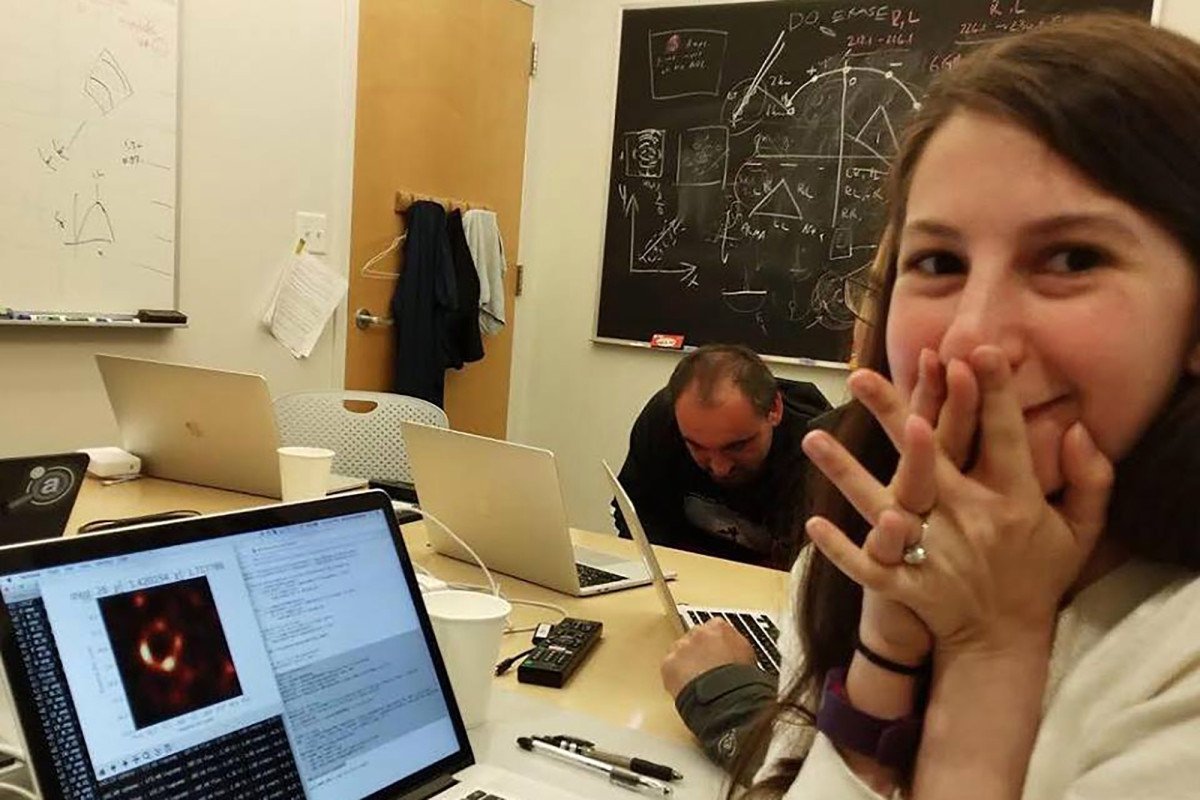29-year-old Katie Bouman has been in news all around the world, over the past few days.
And deservingly so. Her algorithm made it possible for us to see the picture of a black hole in our lifetimes.
Computer scientist Katie Bouman and her awesome stack of hard drives for #EHTblackhole image data 😍 — reminds me of Margaret Hamilton and her Apollo Guidance Computer source code. 👩🏽🔬 pic.twitter.com/MgOXiDCAKi
— Flora Graham (@floragraham) April 10, 2019
Her achievement was like a slap on the faces of people who think ‘women can’t code’ and we couldn’t be happier.

However, even she couldn’t escape trolling by sexist people. No sooner than the news of her contribution began to circulate, people came forward to state that she is getting too much credit for too little work.
For instance, this person who made a Reddit post just on the topic that she shouldn’t be getting the credit for this insane achievement.

The funny part is, Katie has herself denied the claim that it was only her work that made it possible to get the picture and has been very careful about giving credit where it’s due.
But when have trolls ever functioned with logic? They insist that it was Andrew Chael who did most of the work and should be getting the credit (because he can’t speak for himself, right?)
Seeing his co-worker being trolled on social media, Chael posted a series of tweets, clarifying that Katie did make a huge contribution and so did the entire team.
(1/7) So apparently some (I hope very few) people online are using the fact that I am the primary developer of the eht-imaging software library (https://t.co/n7djw1r9hY) to launch awful and sexist attacks on my colleague and friend Katie Bouman. Stop.
— Andrew Chael (@thisgreyspirit) April 12, 2019
(2/7) Our papers used three independent imaging software libraries (including one developed by my friend @sparse_k). While I wrote much of the code for one of these pipelines, Katie was a huge contributor to the software; it would have never worked without her contributions and
— Andrew Chael (@thisgreyspirit) April 12, 2019
(3/7) the work of many others who wrote code, debugged, and figured out how to use the code on challenging EHT data. With a few others, Katie also developed the imaging framework that rigorously tested all three codes and shaped the entire paper (https://t.co/hgJrv3gOE5);
— Andrew Chael (@thisgreyspirit) April 12, 2019
(4/7) as a result, this is probably the most vetted image in the history of radio interferometry. I’m thrilled Katie is getting recognition for her work and that she’s inspiring people as an example of women’s leadership in STEM. I’m also thrilled she’s pointing
— Andrew Chael (@thisgreyspirit) April 12, 2019
(5/7) out that this was a team effort including contributions from many junior scientists, including many women junior scientists (https://t.co/Gte2sTNLXo). Together, we all make each other’s work better; the number of commits doesn’t tell the full story of who was indispensable.
— Andrew Chael (@thisgreyspirit) April 12, 2019
(6/7) So while I appreciate the congratulations on a result that I worked hard on for years, if you are congratulating me because you have a sexist vendetta against Katie, please go away and reconsider your priorities in life. Otherwise, stick around — I hope to start tweeting
— Andrew Chael (@thisgreyspirit) April 12, 2019
He also clarified that he didn’t write ‘850,000 lines of code’, a claim made by many people; and reiterated on the importance of being a ‘decent human’
(Also I did not write “850,000 lines of code” — many of those “lines” tracked by github are in model files. There are about 68,000 lines in the current software, and I don’t care how many of those I personally authored)
— Andrew Chael (@thisgreyspirit) April 12, 2019
I just want to say thank you to the overwhelming number of people who have said such kind words to me and the whole team. It means a lot to see all the people out there who are excited about black hole science and, more importantly, are decent humans. 💜
— Andrew Chael (@thisgreyspirit) April 12, 2019



























